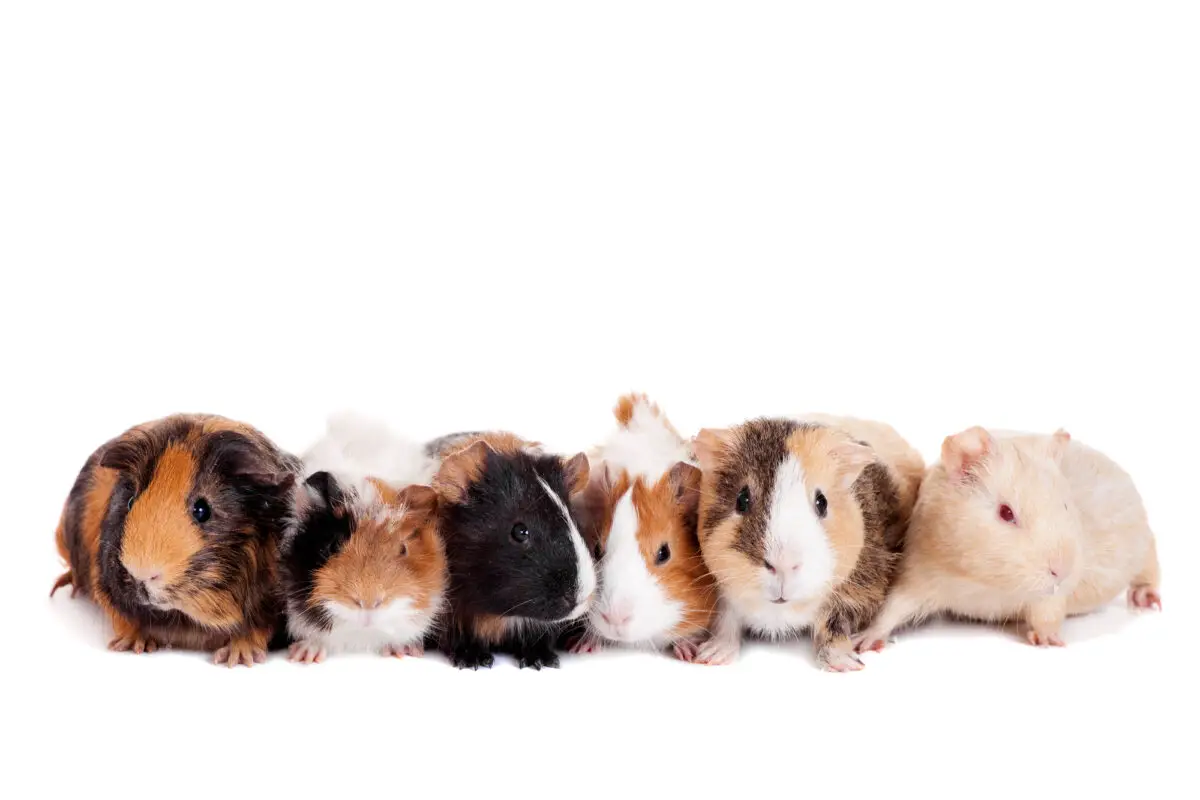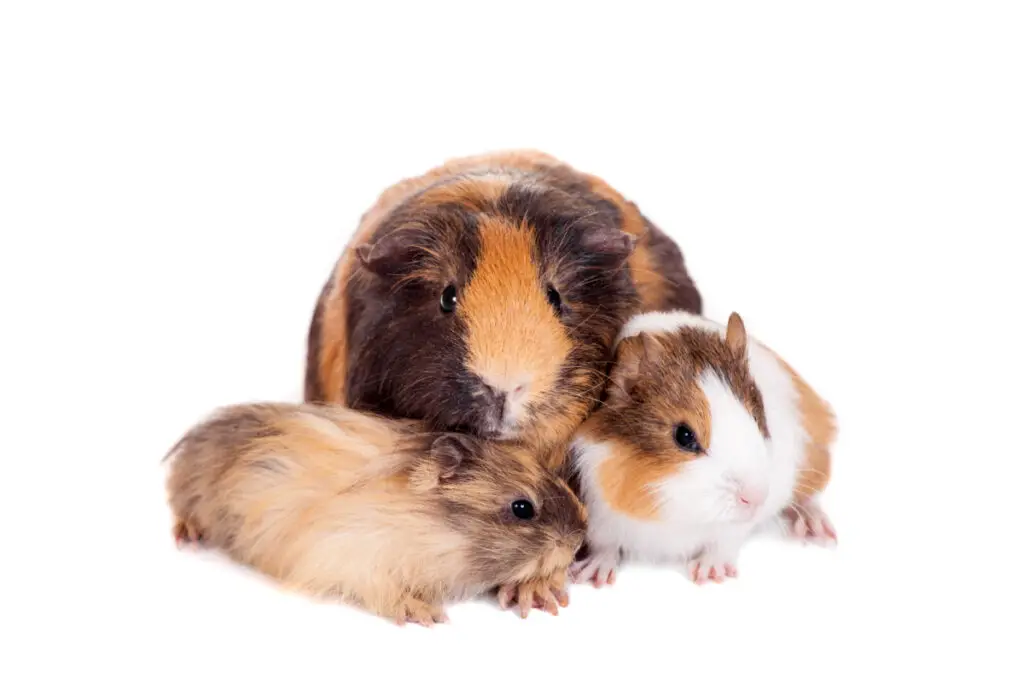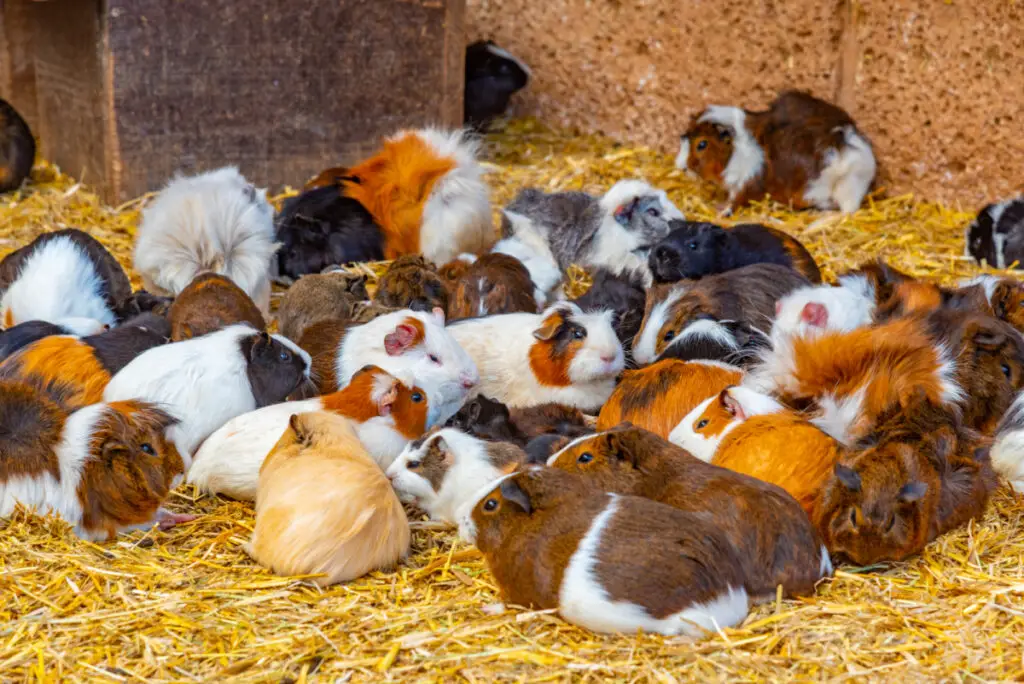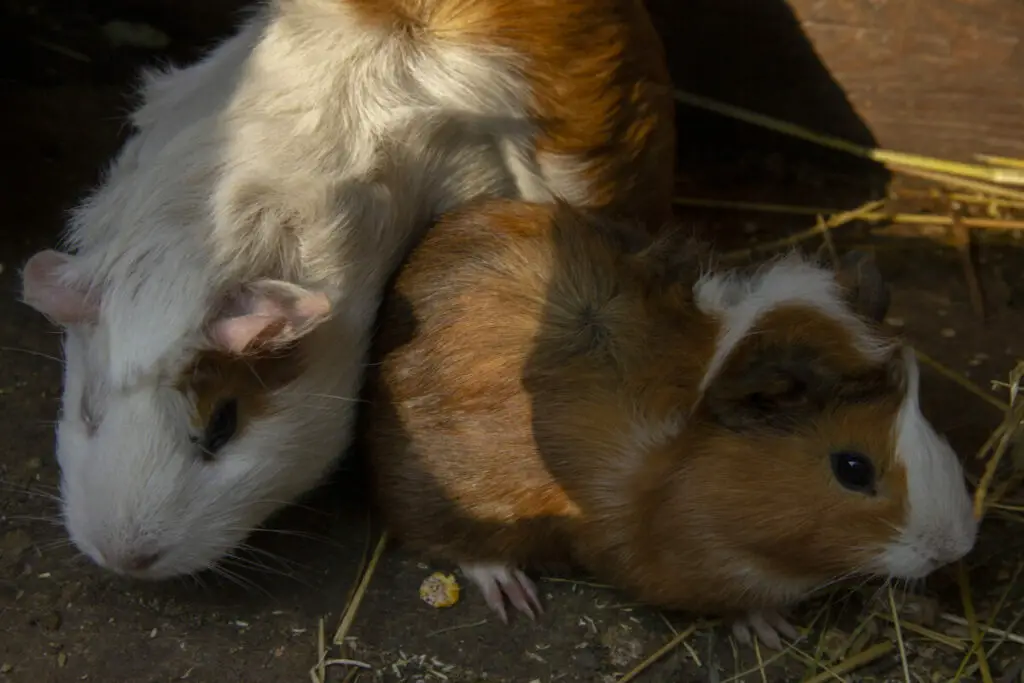Can Guinea Pigs Mate With Their Siblings? Inbreeding Advice
Can guinea pigs mate with their siblings? Here are all the things you need to know: the likelihood of guinea pigs breeding their siblings is extremely low.
That is because guinea pigs are not particularly prone to inbreeding and are generally very careful about avoiding it.
In the wild, guinea pigs live in large groups, and the males often mate with multiple females.

Ensuring the gene pool remains diverse and that the offspring are healthy. Reproduction between siblings is known as inbreeding and can be dangerous for guinea pigs.
That decreases the overall health and fertility of the guinea pigs; only breed unrelated guinea pigs. Read on and learn more information on the dangers of inbreeding.
Inbreeding In Guinea Pigs: Do Guinea Pigs Mate With Their Siblings?
Can guinea pigs mate with their siblings? Before we answer that, here are some facts about your babies:
Guinea pigs are rodents in the Caviidae family and are native to South America.
Your piggies are social animals and prefer to live in pairs or small groups.
Mating between siblings is known as inbreeding and can be dangerous for guinea pigs.
Inbreeding can lead to a higher risk of genetic diseases, defects, and other health problems.
The American Cavy Breeders Association (ACBA) recommends that guinea pigs be bred only with unrelated adults.
Thankfully, inbreeding in guinea pigs is unlikely. They avoid mating with their family to keep the gene pool diverse and their offspring healthy.
Risks of inbreeding in guinea pigs
Breeding between closely related individuals, such as siblings, parents, offspring, or cousins, is known as inbreeding.
Inbreeding affects the offspring, decreasing the overall health of their offspring as well as the size of the litter.
The genetic risks associated with guinea pigs mating with their siblings are numerous; put that into consideration before allowing such a pairing.
Inbreeding can lead to a higher incidence of genetic disorders due to the increased likelihood of both parents carrying the same recessive gene causing the lack of genetic diversity and leading to problems for piggies.

The chances of offspring being born healthy if guinea pigs mate with their siblings depend on many factors.
Generally, guinea pigs should not mate with their siblings due to the potential for genetic health problems.
That is because closely related animals share the same genetic defects that parent guinea pigs pass to their offspring.
It is more likely that the offspring will die since the genetic defects and other problems lessen the chance of survival of cavies born from inbreeding.
These genetic defects can lead to numerous health issues, such as weakened immune systems and increased susceptibility to disease.
Reproductive Habits Of Guinea Pigs
Guinea pigs have certain habits you might already notice; your cavies groom themselves, as cats do, and other guinea pigs.
Domesticated ones tend to thrive as pairs or in groups since they are known as social creatures.
The sounds that guinea pigs make to communicate include whines, rumbling, bubbling, or purring.
Also, they chatter, squeal, or shriek, and guinea pigs may freeze in place for extended periods or move quickly for cover when scared.
Guinea pigs may execute tiny jumps in the air when aroused (known as “popcorning”)- males occasionally live together.
But female groups or groups of one or more females plus a neutered male are more typical. And lastly, piggies are crepuscular creatures, awake at dawn and dusk.
There is more to it when it comes to your piggies’ habits. But there is only information regarding their mating system.
In this species, females can reproduce as early as four weeks old and give birth to litters before they are adults, but males, boars, mature in 3-5 weeks.
The average gestation period for guinea pigs is 59-72 days. All year long, females can reproduce, with the peak occurring in spring.
A sow may have up to five litters in a year, but she may also have six. But the average number is three.

Puppies delivered at birth have fully formed teeth, claws, hair, and partial vision. They instantly move around and start eating solid food, but still need nursing from their mother.
Before weaning, mothers breastfeed their babies for 14 to 21 days.
A female guinea pig may adopt the pup(s) of another; this behavior is called alloparental care.
That occurs if the biological parents pass away or become estranged from them.
A 16-day estrous cycle is typical. A female is fertile for roughly 6 to 11 hours, usually at night. After giving birth, female guinea pigs start a fresh estrous cycle.
Breeding Guinea Pigs Responsibly
Inbreeding should be avoided in guinea pigs, as it can lead to health and behavioral problems.
As a pet owner, you are responsible for the health of your piggies. Therefore, ensure that you breed them responsibly.
The average litter size for guinea pigs is 2-4 pups and the average gestation period is 59-72 days. Here’s a guide for the proper breeding of guinea pigs:
#1. Consider your piggies’ age
Despite knowing that guinea pigs can reproduce at an early age, it is best to wait for at least six months.
If you have piggies, choose a healthy sow and boar for mating. The boar and sow can reproduce even while they are young, but it is best to wait until they are both fully grown.
It is not a good idea to breed guinea pigs in the winter if you keep them in a cage outside your home. It is hard to keep the litter warm and take care of it.
I guess it’s a good idea to know when are guinea pigs full grown!
#2. Introduce your piggies
The sow and the boar should first meet.
Usually, there won’t be a problem with doing that, but it is a good idea to keep an eye on them both until they are comfortable.
The boar will often make a bit of enthusiastic, chuntering noise and will move around the sow in a peculiar stiff-legged manner as a sign that he is interested in mating with her.
#3. Give them time
If the introduction goes smoothly, you can leave the couple together for roughly 17 to 48 days. Every 16 days or so, the sow will go into heat.
However, it is advisable to wait longer because even after 17 days or the first heat cycle, a sow may not become pregnant; therefore, there may be a second or third heat cycle just to be safe.
#4. Separate them after
Day 48 is the appropriate time to remove the boar and separate it from the sow.
The boar might wish to mate with the mother guinea pig again after she gives birth to newborn guinea pigs, which is the reason.
You don’t want that to happen, but a boar never harm the young guinea pigs. That much is certain.
#5. Find out if your sow is pregnant
The sow will appear peculiar as if she has sucked up a grapefruit. That is the telltale sign that she is pregnant.
It could be challenging to determine whether she is pregnant or if she will have a tiny litter.
Let the sow and her other female friends dwell together once more if you separate them beforehand for breeding.
Most female guinea pigs will enjoy playing the role of “aunty guinea pig” to the young animals. Having hay beddings for the sow is one crucial step.
Hay used as bedding will give the babies a cozy place to sleep as the sow won’t build a nest for them.
Hay is a need because using straw as bedding could lead to corneal ulcers in infants.

#6. The babies will arrive soon!
You must be ready for the impending arrival of the young guinea pigs after 9 to 10 weeks of gestation.
Most of the time, they give birth at night, but in rare circumstances, they might also give birth during the day.
The mother guinea pig gives birth to 3 to 5 kids without any issues. But if problems arise, get in touch with your neighborhood vet.
Don’t panic since the sow will clean the kids of their birth sac, which has covered them.
Newborn guinea pigs have open eyes and furs and follow their mother.
Picking up the infants to ensure their well-being is acceptable. For the newborns and their mothers to form a link, it is vital to let the babies alone after monitoring them.
#7. Piggies will start to grow
The young guinea pigs begin to taste and consume solid foods at around two weeks old, but they continue to rely on their mothers and will nurse for another two to three weeks.
For the babies to become accustomed to human contact, you should begin handling them frequently during that period.
As long as they are six weeks old, leave the infants with their mothers.
#8. Keep the boars away from any female
In the sixth week, keep the male infant apart from his sisters and mother. You don’t want to take a chance on it because, at that age, they can already start reproducing.
#9. Reaching the proper age
Once the infants are roughly eight weeks old, you can sell them if you wish to. It can be enjoyable to breed guinea pigs. If you follow our advice, raising piggies won’t ever be challenging.
It’s A Wrap!
Can guinea pigs mate with their siblings? Breed guinea pigs with unrelated animals to ensure healthy offspring.
To avoid inbreeding, don’t breed guinea pigs with their siblings or close relatives.
Inbreeding can cause a variety of health and behavioral problems in guinea pigs, such as reduced fertility, increased risk of defects, and increased risk of genetic diseases. For more guinea pig-related articles, learn if guinea pigs can get rabies.
